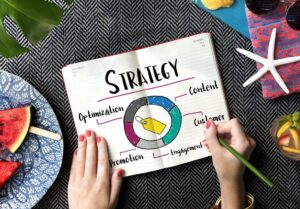The paradox of choice occurs when too many options overwhelm decision-making, impacting both customers and businesses. Imagine entering a grocery store with endless jam flavors, juice varieties, or snacks from one brand. Similarly, someone shopping for a laptop faces countless brands, models, and features, delaying or abandoning their purchase. Or picture choosing between chocolate and caramel ice cream at a shop, only to second-guess your choice later. This is the paradox of choice. This article explores how decision overload affects online and offline businesses, reducing conversions, satisfaction, and profits, and offers solutions to mitigate it.
What Is the Paradox of Choice?
The paradox of choice, or decision paralysis, arises when excessive options hinder decisions, leading to stress, dissatisfaction, or lost sales. For example, in online stores, too many product variants confuse shoppers, lowering conversion rates, while in physical stores, crowded shelves overwhelm customers.
How to Avoid Decision Paralysis
Most people overthink important decisions, but even small choices can stall progress. Here’s how to manage the paradox of choice:
- Recognize the Issue: Decision-making involves quickly listing options and eliminating poor ones. For complex choices, a timeline helps, though it may extend the process.
- Identify Overthinking Causes: Reflect on why you’re stuck. Are you worried about judgment, past regrets, or negative impacts on loved ones? Understanding this clarifies your hesitation.
- Act on Small Choices: For minor decisions, act quickly without overanalyzing. For instance, pick a restaurant without searching or let instinct guide your walking route. Practice makes this easier.
- Limit Decision Time: Prolonged thinking aids big decisions but can disrupt life. Research pros and cons, then allocate 30–60 minutes to decide, balancing efficiency and care.
- Trust Your Instincts: Gut feelings guide unique situations, but not everyone trusts them. Believe in what your emotions signal for confident choices.
- Use a Scoring System: Assign scores to options based on key features’ importance. This compares strengths and weaknesses, reducing confusion in the decision process.
Overcoming Decision Paralysis for Businesses
Every business decision, big or small, affects growth and sales. The paradox of choice can harm customers and brands, but these strategies help:
- Understand Customers: Identify buying patterns. For urgent purchases, place essentials in accessible spots to speed up the shopping process.
- Focus on Top Sellers: Remove low-performing products and prioritize high-demand items that align with customer preferences, boosting sales efficiency.
- Limit Offerings: Set a product range boundary, defining minimum and maximum options to prevent overwhelming customers.
- Train Employees: Equip staff to assist customers effectively. Knowledgeable employees suggest tailored options, easing the decision process.
- Simplify Displays: Organize shelves logically to reduce stress, helping customers find, choose, and buy with ease.
Why Is the Paradox of Choice Important?
Understanding the paradox of choice matters because it enables better decision-making in daily life and business, improving efficiency and satisfaction for all.
How Many Choices Are Ideal?
Conclusion
Fewer choices often lead to happier outcomes. The paradox of choice is critical for businesses and consumers alike, shaping satisfaction and success. By addressing choice overload, you can streamline decisions and thrive in 2025.







